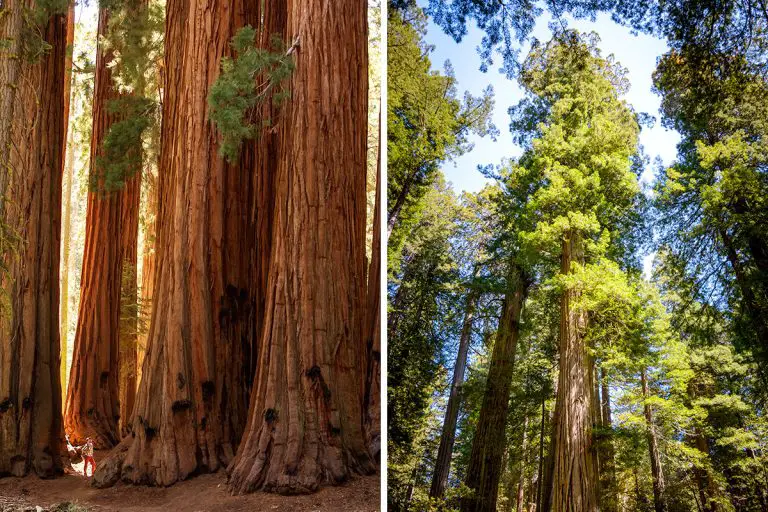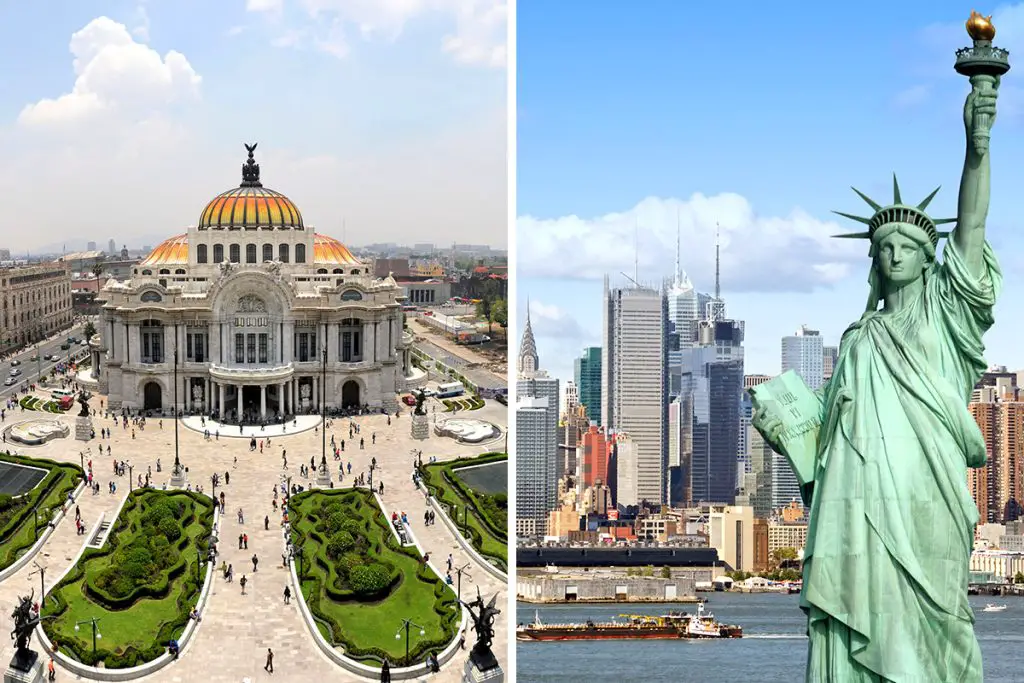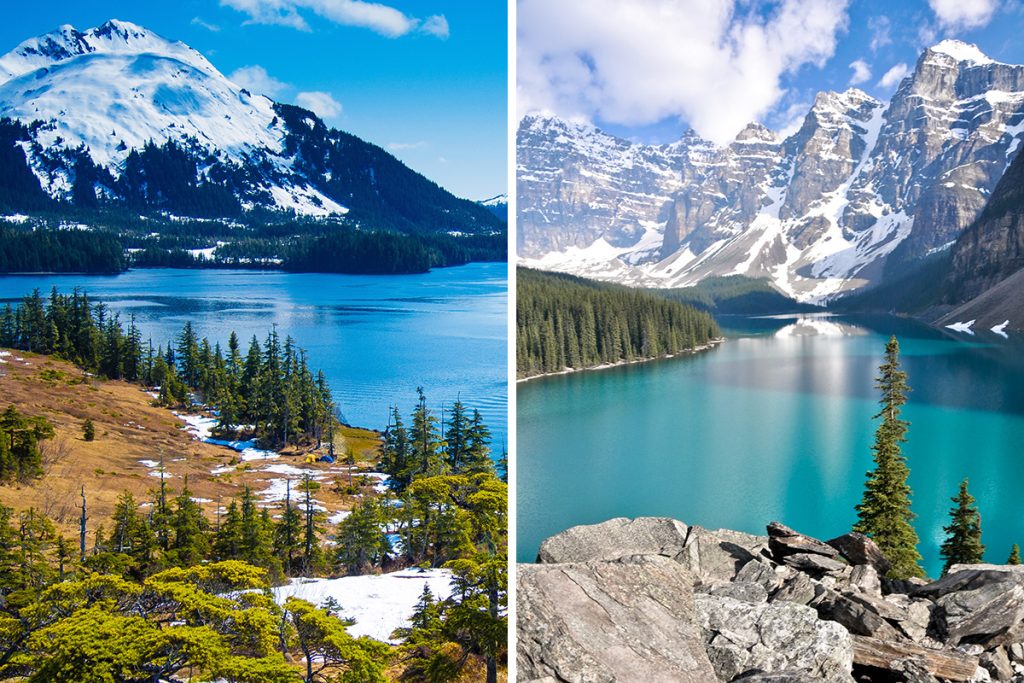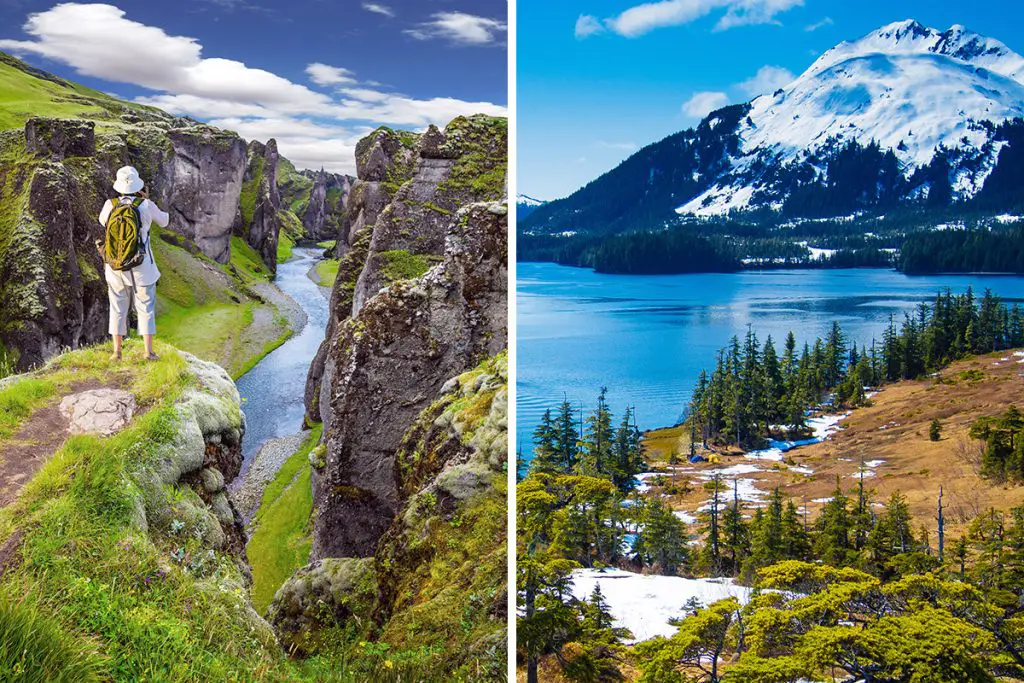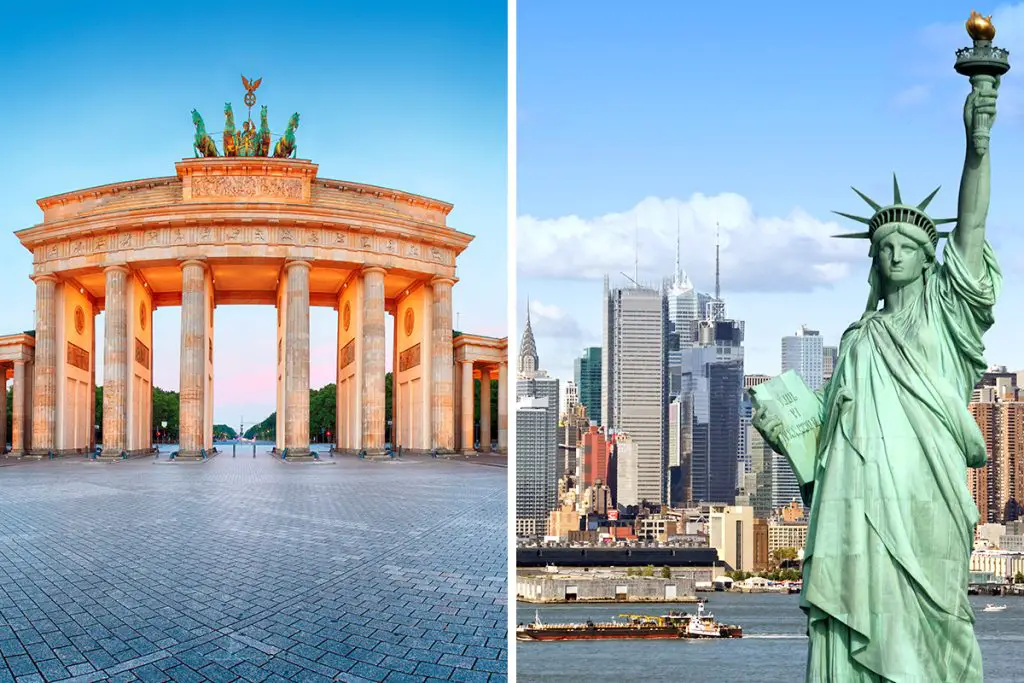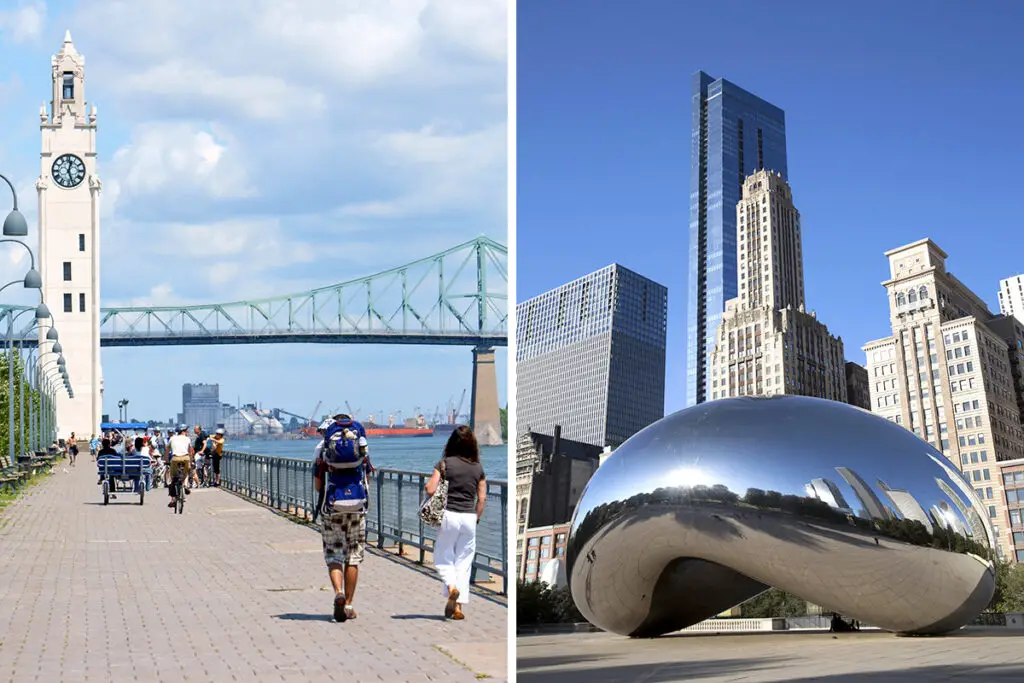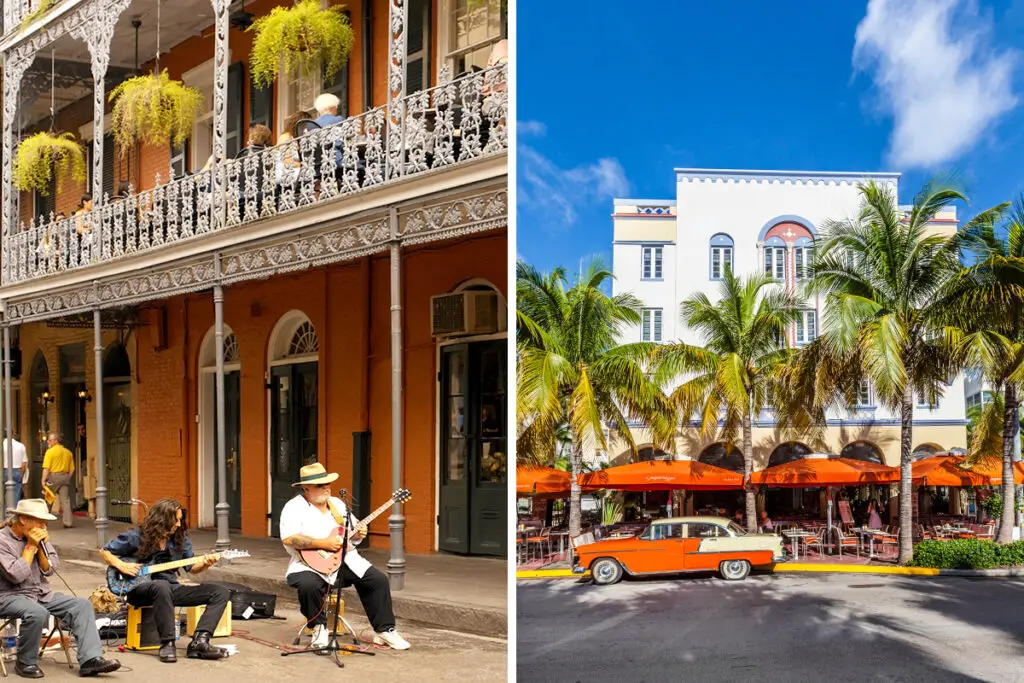Imagine yourself under the shadow of these colossal trees, your heart pounding with the thrill of a new adventure. As the breeze rustles through their branches high above, every inch of these parks tells a story. Dive into this post to unravel the histories of these majestic locations.
History & Culture
When you’re considering Sequoia National Park and Redwood National Park, history and culture add a vital layer of depth to your journey.
Sequoia National Park, located in California’s southern Sierra Nevada mountains, was established back in 1890. The second-oldest national park in the United States, it has borne silent witness to the comings and goings of generations.
The park has served as a sanctuary for the sequoias, an ancient species whose members include the General Sherman Tree, the largest tree on Earth by volume.
Inhabited by Native American tribes for millennia, Sequoia carries a deep sense of human history. The tribes considered the forest sacred and built their lives around these towering giants, their beliefs and rituals deeply intertwined with the land.
Redwood National Park, on the other hand, hugs the northern California coast. Designated as a national park in 1968, it is relatively younger but no less rich in cultural heritage.
Before European contact, the land was home to indigenous tribes such as the Yurok and the Tolowa. These tribes revered the redwoods, using their bark and wood for constructing homes, canoes, and tools. Even today, the park bears marks of this intimate relationship between the land and its people.
Now, juxtaposing the two parks, you’ll notice some striking differences and similarities. Sequoia’s history spans a longer timeline as a national park, and its legacy is marked by the awe-inspiring size and age of its trees. The sense of timelessness, combined with its cultural connections, might give you a profound feeling of awe and respect for the natural world.
Redwood, though newer in its national park status, also has a deep-rooted tribal history. The rugged coastal environment, coupled with the colossal redwoods, offers a different but equally enchanting narrative. The tribal cultures here seem almost interwoven with the very fibers of the redwood trees.
In essence, both Sequoia and Redwood National Parks offer glimpses into the past that extend far beyond the arrival of European settlers. The histories and cultures they embody make your journey more than just a visit. It’s an opportunity to step back in time and connect with the human spirit that has revered these landscapes for thousands of years. You are not merely a visitor, but a participant in a story that continues to unfold.
Attractions & Activities
Step into the heart of nature’s wonderland, where every pathway, every view, every moment offers a new thrill. In both Sequoia National Park and Redwood National Park, you’ll find a world teeming with adventures and sights, each unique in its own way.
In Sequoia National Park, the star attraction is, of course, the General Sherman Tree. This giant among giants stands about 275 feet tall (about 84 meters), a sight that leaves even the most seasoned travelers in awe. A visit here is not complete without a trip to the Giant Forest, home to half of the Earth’s largest and longest-living trees.
Wander along the Congress Trail, a two-mile loop that takes you past standout trees like The President and The Senate. For breathtaking views, don’t miss Moro Rock, a granite dome you can climb for a panoramic vista of the park and beyond.
Redwood National Park presents a different set of allures. The aptly named Tall Trees Grove is a must-visit, home to some of the world’s highest trees, such as the towering Hyperion.
A trek through the park often leads you to Fern Canyon, a geological marvel with fern-draped vertical walls. Wildlife enthusiasts should keep their eyes peeled for Roosevelt elk, often spotted grazing in the park’s meadows.
A comparison of both parks reveals a shared emphasis on the natural world’s grandeur. In Sequoia, your journey centers on age and size, the might and longevity of the sequoias lending an ancient, reverential feel to your explorations. In Redwood, your experiences may be colored by the coastal ecosystem’s diversity and the quiet elegance of the tall, mist-kissed trees.
To sum it up, whether you choose Sequoia with its age-old giants and sky-touching domes, or Redwood with its towering groves and captivating wildlife, you’re in for an unforgettable journey. Each park offers unique attractions and activities that let you immerse yourself in nature’s grand narrative.
Eating, Drinking & Nightlife
Dining in the great outdoors of Sequoia National Park and Redwood National Park is an experience in itself, taking you beyond conventional restaurant settings. These parks provide unique backdrops for your meals, turning even a simple picnic into an unforgettable event.
In Sequoia National Park, the Wuksachi Lodge is the central dining spot, serving up a variety of meals. From locally sourced rainbow trout to rack of lamb, the flavors cater to a diverse palate. Remember to check out the Sequoia Cider, an apple beverage made with local ingredients. But don’t limit yourself to the Lodge – consider packing a picnic to enjoy amidst the sequoias!
Redwood National Park encourages a more self-sufficient approach to eating. There are no restaurants within the park itself, but picnic areas abound. With a little planning, you can enjoy a meal beneath the towering redwoods or by the picturesque coastline.
For drinks, head out to the nearby towns where you can find local breweries offering craft beers, reflecting the area’s rich brewing tradition.
Nightlife in both parks is less about bright lights and more about nature’s own spectacular show. In Sequoia, imagine settling around a campfire under a blanket of stars. Or in Redwood, picture a moonlit walk along the beach with the sound of waves as your soundtrack.
In summary, whether you’re dining under the towering trees in Sequoia or picnicking by the ocean in Redwood, your eating and drinking experiences are sure to be memorable. And when it comes to nightlife, these parks trade neon lights for starlight, offering a unique, tranquil, and unforgettable end to your days.
Shopping
Looking for a keepsake from your visit to Sequoia or Redwood National Park? Let’s delve into the unique shopping experiences that await.
Sequoia National Park offers several gift shops where you can find the perfect souvenir. The Sequoia Parks Conservancy Park Store, located at the Giant Forest Museum, stocks a range of items. From locally made crafts to books about the park’s history and ecosystem, there’s something for everyone.
The Wuksachi Lodge Gift Shop is another spot to check out. Here, you can find clothing, postcards, and even sequoia seedlings to plant at home!
Redwood National Park offers a different shopping experience. You won’t find large souvenir shops within the park boundaries. Instead, you’ll come across smaller visitor center stores with select items. Books, maps, and some locally made crafts can be found at the Thomas H. Kuchel Visitor Center.
For a broader selection, the nearby towns offer an array of stores selling local crafts, artwork, and specialty goods that capture the spirit of the area.
In conclusion, whether it’s Sequoia’s well-stocked gift shops or Redwood’s visitor center stores and neighboring town shops, each offers unique opportunities to find that perfect memento of your visit. You’re sure to return home with more than just memories!
Accommodation
When visiting Sequoia National Park or Redwood National Park, having a comfortable place to stay is essential. Both parks offer various options, from campsites to lodges, each with its own unique offerings.
In Sequoia National Park, lodging options are neatly clustered. Wuksachi Lodge, nestled in the heart of the park, offers a rustic yet comfortable stay. Equipped with modern amenities, it ensures a cozy retreat after a day of exploration.
For a more immersive nature experience, you can opt for camping. There are numerous campsites scattered throughout the park, like the Lodgepole Campground, perfect for sleeping under the stars.
Redwood National Park, in contrast, does not have lodging within the park boundaries. However, camping is available and popular. The Jedediah Smith, Mill Creek, and Elk Prairie Campgrounds are favorites among visitors.
For those seeking a roof overhead, nearby towns such as Orick and Klamath offer a range of accommodations, from charming bed and breakfasts to larger hotels.
In essence, whether you opt for Sequoia’s centralized lodging or Redwood’s campgrounds and nearby town options, you’ll have a comfy place to recharge before your next day of adventure.
Family-Friendliness & Children’s Activities
Inviting your children into the world of national parks means sparking an early love for nature. Sequoia and Redwood National Parks provide ample opportunities for kids to learn, play, and explore.
Sequoia National Park is an outdoor classroom. The Junior Ranger Program engages children in fun, educational activities about the park’s ecosystem. There’s also the Big Trees Trail, an easy, paved loop around a meadow that’s perfect for little legs.
Redwood National Park offers similar children’s programs. The Junior Ranger and Redwood EdVentures Quests mix learning with fun exploration. Kids will also enjoy the Simpson-Reed Trail, a simple loop that winds through a dense grove of redwoods, a fairy-tale setting for an afternoon stroll.
In sum, whether it’s through engaging educational programs or simple, family-friendly hikes, both Sequoia and Redwood parks offer plenty of activities to keep your kids entertained and inspired.
Getting There & Getting Around
The journey to Sequoia National Park or Redwood National Park is part of the adventure, each offering its own unique travel experience.
Sequoia National Park is about 230 miles (370 kilometers) north of Los Angeles. It’s a scenic drive, especially the latter part through the Sierra Nevada mountains. Inside the park, the free Sequoia Shuttle runs seasonally, offering an easy way to get around and see the main attractions.
Redwood National Park, further up the coast, is approximately 325 miles (523 kilometers) north of San Francisco. Once in the park, you can use the Redwood Area Parks Shuttle, also seasonal, to travel between various points of interest.
To sum up, whether you’re driving up scenic mountain roads to Sequoia or along the Pacific coast to Redwood, your journey is set to be a memorable one. And once you’re there, convenient shuttle services in both parks make getting around a breeze.
Weather
The beauty of Sequoia and Redwood National Parks can be experienced in different hues across seasons, thanks to their varied weather patterns. Understanding the climate can help you plan the perfect visit.
Sequoia National Park experiences warm summers and snowy winters. July is the warmest month with average highs of 90 degrees Fahrenheit (32 degrees Celsius), and January is the coldest, averaging around 40 degrees Fahrenheit (4 degrees Celsius). Snowfall, common in winter, can add a magical touch to the sequoia groves but also requires special preparation for safe travel.
On the other hand, Redwood National Park has a more temperate coastal climate. Summers are cooler, with July temperatures averaging around 64 degrees Fahrenheit (18 degrees Celsius). Winters are mild and wet, with January temperatures typically in the mid-40s Fahrenheit (around 7 degrees Celsius).
The park is often shrouded in fog, especially in the mornings, which gives the redwood forest its unique, mystical charm.
In conclusion, whether you choose the warm, dry summers of Sequoia or the mild, foggy climate of Redwood, each offers a unique way to experience these natural wonders.
Safety
Safety is a key factor to consider when visiting any national park. Both Sequoia and Redwood National Parks are generally safe, but like all natural areas, they require certain precautions.
In Sequoia National Park, altitude sickness can be a concern due to the park’s high elevations. Visitors are encouraged to acclimate and stay hydrated. Wildlife, such as bears, are common and should be respected. Store food and scented items properly to avoid attracting them.
In Redwood National Park, some trails can be slippery, especially in wet conditions, so sturdy footwear is advised. Just like in Sequoia, bears are present, so be sure to follow the same food storage guidelines.
One unique safety aspect in these parks is the tree falls. The gigantic trees in both Sequoia and Redwood parks sometimes fall, and while it’s rare, it’s still a risk to be aware of when exploring these forests.
In summary, with the right precautions, both parks offer a safe environment to enjoy their natural beauty.
Cost
Planning your budget for a trip to Sequoia or Redwood National Park involves considering costs like entrance fees, lodging, food, and transportation.
At Sequoia National Park, a seven-day vehicle pass costs $35 (US dollars), and camping fees vary from $22 to $50 per night. Meals at the Wuksachi Lodge can range from $10 to $30 per person.
In contrast, Redwood National Park does not charge an entrance fee, which is a cost-saving bonus. Camping fees are about $35 per night. For meals, you’ll need to head to the nearby towns, where dining options vary widely in price but expect to spend around $10 to $25 per person.
In conclusion, while the costs at each park can vary, with a bit of planning, both Sequoia and Redwood National Parks offer a range of options to suit different budgets.
Which Is Better – Sequoia or Redwood National Park?
Choosing between Sequoia and Redwood National Park can seem like a daunting task, as both parks offer breathtaking beauty and unique experiences. However, based on your preferences in various aspects, one may hold more appeal.
The vibrant history of Sequoia National Park, with its deep connection to indigenous tribes and preservation efforts, offers a rich cultural experience. Redwood, however, with its own unique ties to Native American history and conservation narratives, provides a different but equally captivating historical backdrop.
If exploring unique attractions and engaging in outdoor activities are at the top of your list, Sequoia, with its towering General Sherman Tree and adventurous Moro Rock climb, might be more your speed. Redwood, on the other hand, captivates with its Fern Canyon and immersive ranger-led programs.
Neither park has a traditional beach, but Sequoia’s Lake and Redwood’s coastal scenery each have their own charm. If you want to dip your toes in the water or have a picnic by a peaceful lake, Sequoia has the edge. But if you’re drawn to the sound of crashing waves along a rugged coastline, then Redwood’s your park.
In terms of dining and nightlife, you’ll find options near both parks, but keep in mind that their remote nature means they’re not hotspots for gourmet cuisine or bustling nightlife. However, each park’s distinct ambiance can lend a unique flavor to your after-dark adventures.
Sequoia offers a variety of shopping options in and around the park, with a focus on outdoor gear and nature-inspired souvenirs. Redwood also offers shopping opportunities with a similar focus in its nearby towns.
For accommodation, both parks have a range of camping and lodging options. Your choice might depend on your comfort preferences, budget, and love of adventure. Sequoia provides rustic comfort in the heart of nature, while Redwood offers accommodations closer to coastal towns.
The family-friendliness of both parks is highlighted by the variety of children’s activities available, from junior ranger programs to interactive nature walks. Redwood, with its lower elevations and milder climate, may be a bit more comfortable for younger kids or for families with a wide age range.
Getting to and around both parks involves some driving, with Sequoia being more accessible from major Californian cities. However, Redwood’s location along the Pacific Coast Highway offers a scenic route that’s hard to beat.
Sequoia’s warm summers and snowy winters contrast with Redwood’s cool, foggy summers and mild winters. If you prefer sunnier, drier conditions, Sequoia is your best bet. But if you love misty forests and milder temperatures, Redwood awaits.
Both parks have safety precautions to follow, and the cost of visiting can vary based on factors like entrance fees, accommodation, and dining. Planning ahead can help you get the most out of your budget, regardless of which park you choose.
In the end, your decision between Sequoia and Redwood National Park will likely come down to your personal preferences. Both parks offer awe-inspiring views of some of the largest trees on Earth, along with a range of activities and experiences that make them worth visiting. It’s not a question of which park is better, but rather which park is better for you.

